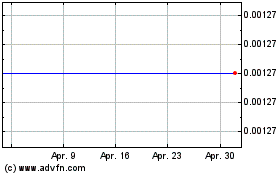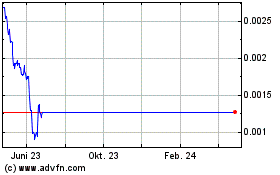Data Shows Stablecoin War Heating Up Amid Regulatory Crackdown
15 Februar 2023 - 11:35PM
NEWSBTC
The Securities Exchange Commission (SEC) continues to pursue its
regulatory policy toward the crypto industry. In the process, the
regulator contributed to the so-called stablecoin war, which
intensified. Paxos’ decision to stop minting new BUSD tokens
caused capital to flee to rival stablecoins like Tether’s USDT,
which raised $1 billion just hours after the SEC crackdown on the
crypto-regulated blockchain platform. Related Reading: Here Are 3
Factors That Could Drive Bitcoin Higher Than Ethereum Stablecoin
War See New Casualties According to a Bloomberg report, trading
firms are moving out of stablecoins USD Coin (USDCD), issued by
Circle, and BUSD, issued by Paxos, and into Tether’s USDT, which is
more attractive given that the token is based outside the U.S.
jurisdiction. Tether Holdings Ltd’s USDT- the most widely adopted
stablecoin launched in 2014, has increased its market shares by
over $1 billion in the past 24 hours as traders move their holdings
to this asset. With the allegation that BUSD is an
unregistered security with the SEC, the market cap of the
stablecoin leader rose from $68.5 billion to a new high of $69.5
billion, according to CoinMarketCap data. The Hong Kong-based
stablecoin giant represents an immediate solution for investors.
SEC Chairman Gary Gensler is implementing new requirements for
crypto exchanges to gain further regulatory approval. Data compiled
by DeFi Llama proves that with the recent capital raised in the
last 24 hours, Tether’s USDT dominance has grown again to 51.23% in
the total market cap of the crypto industry, which is currently
sitting at $136.9 billion. The New Normal For Stablecoins?
According to a recent post on Twitter from research firm Delphi
Digital, despite the crypto bear market that characterized the
industry in 2022, the total stablecoin market cap is only down
-18%, while the total crypto market cap is down -55%.
Following the news that Paxos has stopped minting BUSD,
decentralized stablecoin assets such as FLX and LQTY are up 34% and
24%, respectively, according to the report. FLX and LQTY are
governance tokens issued by Reflexer Finance (RAI) and Liquity
Protocol (LUSD). According to Delphi Digital, Binance has
admitted that the BUSD peg was undercollateralized by more than $1
billion on three occasions in 2020 and 2021 but has since fixed it.
68% of BUSD supply is on Ethereum (ETH), while 32% has been bridged
to the BNB chain after the news. Related Reading: Is The
Biden Administration Behind Attack On Crypto? Liquidity for BUSD
has been steadily inching down since the start of 2023, Delphi
Digital claims. At the same time, traders sell their BUSD tokens
for other stablecoins on the Ethereum-based Curve protocol’s pool
to leverage its fluctuations. According to Delphi Digital, the pool
has 81% of reserves in BUSD, following a spike to hit 86% following
the recent SEC news. Bitcoin continued its bullish reaction
after inflation data was released on February 14th. Bitcoin is
trading at $24,000, representing a gain of 8.4% in just 24 hours,
and back in the green in the 7-day time frame, up 3.5%. Featured
image from Unsplash, chart from Trading View.
(COIN:XCNNUSD)
Historical Stock Chart
Von Dez 2024 bis Jan 2025

(COIN:XCNNUSD)
Historical Stock Chart
Von Jan 2024 bis Jan 2025

Echtzeit-Nachrichten über (Cryptocurrency): 0 Nachrichtenartikel
Weitere Chain News-Artikel